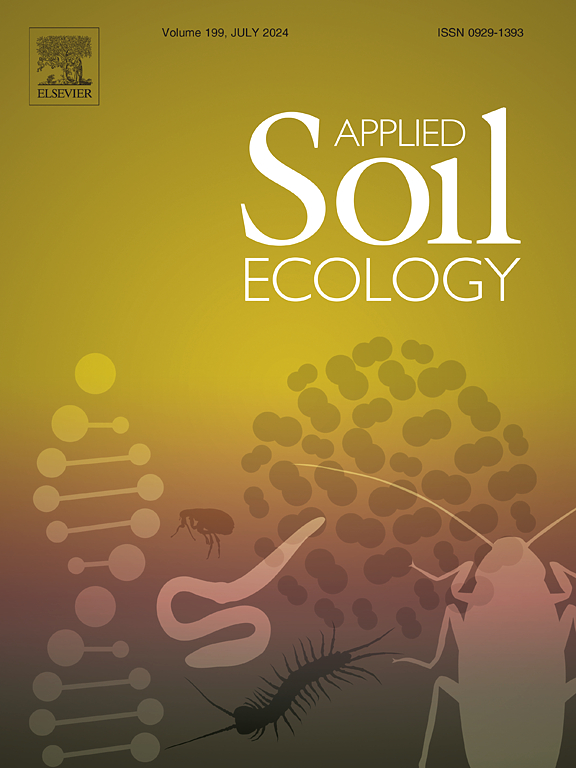马尾松人工林菌根与含磷细菌的相互作用对土壤有效磷的影响
IF 5
2区 农林科学
Q1 SOIL SCIENCE
引用次数: 0
摘要
细菌和真菌的多样性和相互作用调节着磷(P)和碳(C)的通量。然而,细菌-真菌相互作用如何介导土壤P转化过程以及P与有机C循环耦合以增加P有效性和C固存的机制尚不清楚,主要与马尾松林龄的增加有关。研究了5个不同林龄(0、7、19、25和34年)马尾松林土壤理化性质、磷组分、土壤有机碳以及土壤微生物群落的多样性和组成。7年龄和34年龄森林中外生菌根真菌(ECM)的相对丰度较高,速效磷含量和土壤有机碳含量增加,而寄存细菌的多样性减少。同时,与其他林龄的森林相比,这些森林中腐养真菌的丰度降低,这表明ECM真菌可能抑制自由生活微生物的SOC腐烂。这些发现表明,ECM真菌对土壤有效磷的增强增加了植物对这些共生生物的依赖,从而通过增加ECM真菌生物量和植物对土壤碳的分配来促进土壤碳的固存。本文章由计算机程序翻译,如有差异,请以英文原文为准。
The interaction between mycorrhiza and phoD-harbouring bacteria influencing soil available phosphorus in Pinus massoniana plantations
The diversity and interactions of bacteria and fungi regulate phosphorus (P) and carbon (C) fluxes. However, how bacterial–fungal interactions mediate the process of soil P transformation and the coupling of P with organic C cycling to increase P availability and C sequestration remains unknown, mainly with the increasing stand age of Pinus massoniana. This study examined soil physicochemical properties, P fractions, soil organic carbon and the diversity and composition of soil microbial communities in P. massoniana forests of five different stand ages (0, 7, 19, 25, and 34 years). A higher relative abundance of ectomycorrhizal fungi (ECM) was observed in the 7- and 34-year-old forests, accompanied by an increase in available P content and soil organic carbon, while a reduction in the diversity of phoD-harbouring bacteria. Concurrently, a decreased abundance of saprotrophic fungi was detected in these forests compared to forests of other stand ages, suggesting that ECM fungi may inhibit SOC decay by free-living microbes. These findings indicate that the enhancement of soil available P by ECM fungi increases plant reliance on these symbiotic organisms, thereby promoting soil C sequestration through a rise in ECM fungal biomass and plant C allocation to soils.
求助全文
通过发布文献求助,成功后即可免费获取论文全文。
去求助
来源期刊

Applied Soil Ecology
农林科学-土壤科学
CiteScore
9.70
自引率
4.20%
发文量
363
审稿时长
5.3 months
期刊介绍:
Applied Soil Ecology addresses the role of soil organisms and their interactions in relation to: sustainability and productivity, nutrient cycling and other soil processes, the maintenance of soil functions, the impact of human activities on soil ecosystems and bio(techno)logical control of soil-inhabiting pests, diseases and weeds.
 求助内容:
求助内容: 应助结果提醒方式:
应助结果提醒方式:


